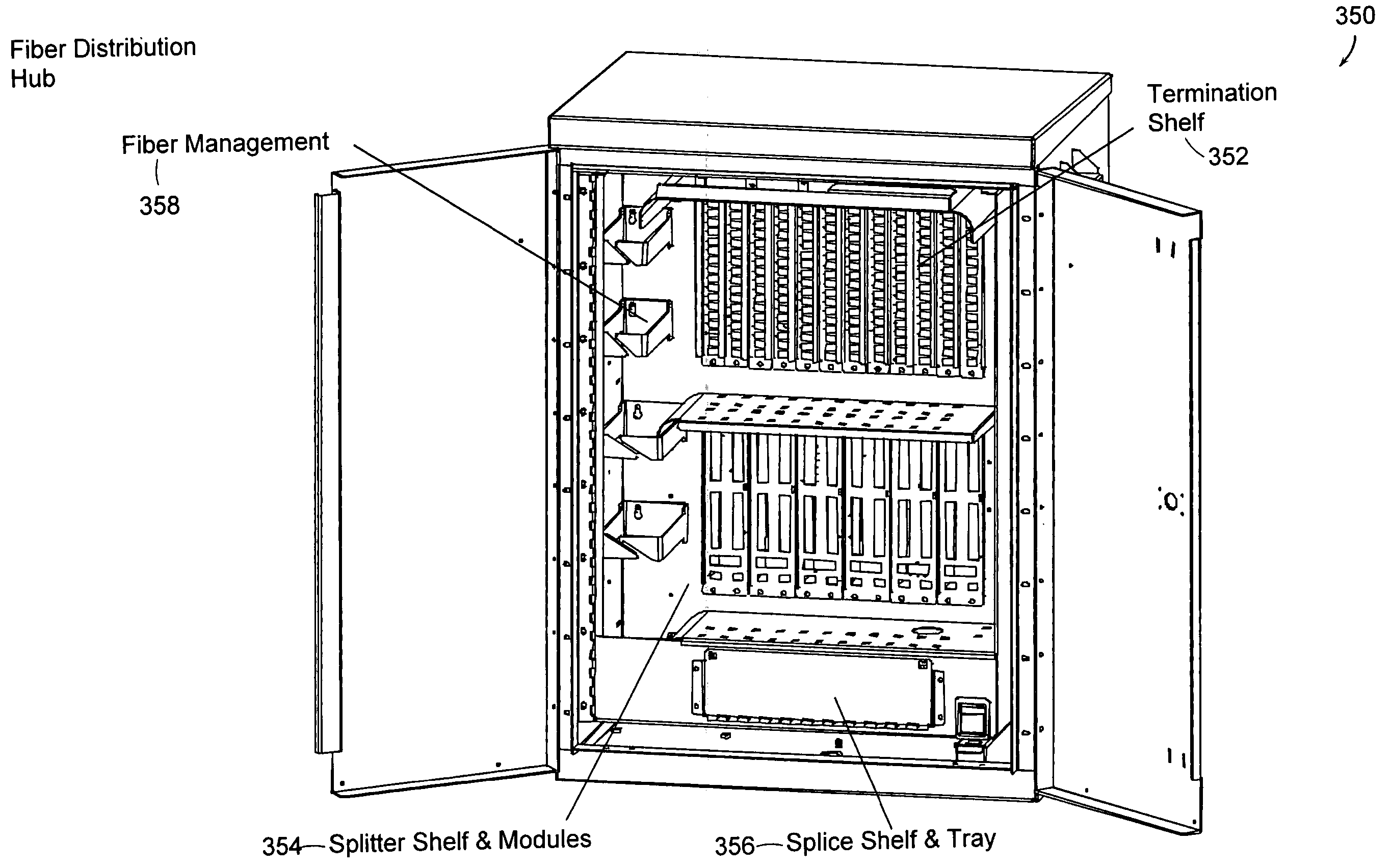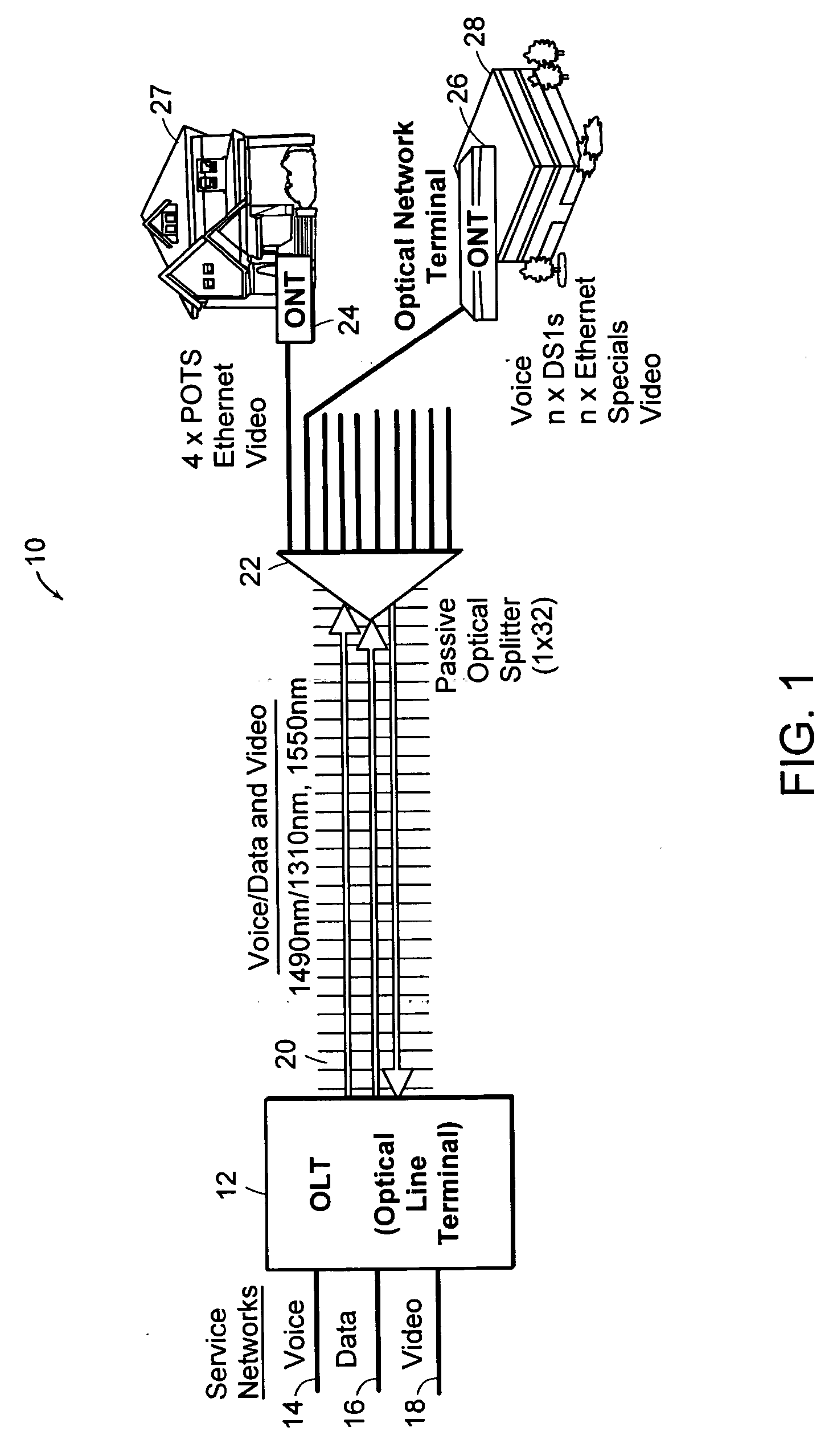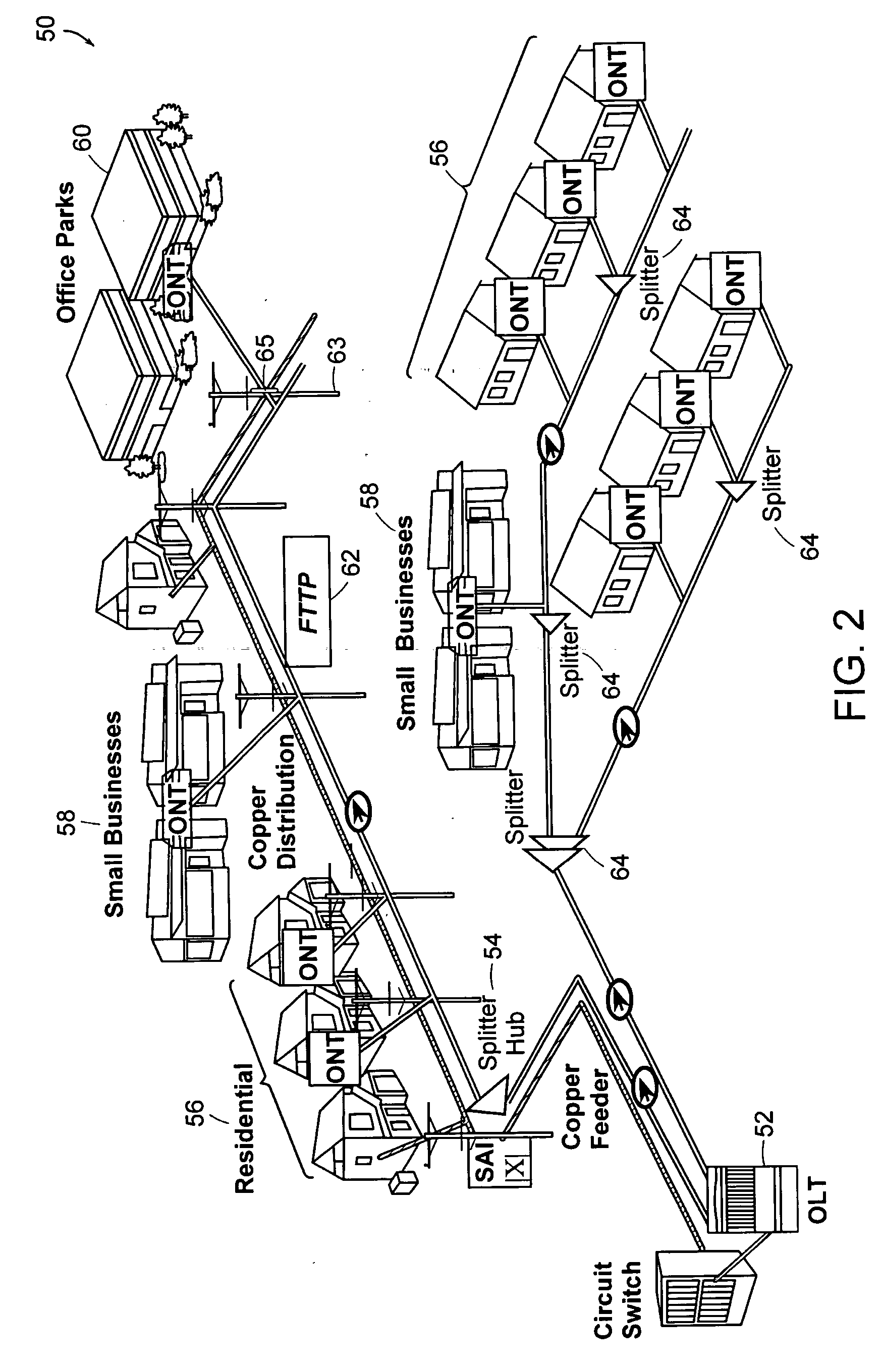Systems and methods for optical fiber distribution and management
a technology of optical fiber and distribution and management, applied in the direction of optics, fibre mechanical structures, instruments, etc., can solve the problems of delay in service connection, lack of protection and organization of connectorized ends, and easy damage, so as to minimize and eliminate congestion, facilitate flexibility, and minimize the effect of slack
- Summary
- Abstract
- Description
- Claims
- Application Information
AI Technical Summary
Benefits of technology
Problems solved by technology
Method used
Image
Examples
Embodiment Construction
[0043] The preferred embodiments of the present invention are directed to an optical splitter module that is equipped with adapters for storing connectorized optical splitter pigtail ends. Adapters are administratively located on the optical splitter module bulkhead, for example, but not limited to, in octal count arrangements ideally suited to identify splitter ports having sixteen or thirty-two output ports. The adapters in accordance with preferred embodiments are used to store or stage the connectorized ends of the optical splitter for rapid location, identification, easy access and removal of pigtail output ends. In accordance with preferred embodiments, the optical splitter outputs extending from the bulkhead on the module are wrapped back and secured to adapters on the splitter bulkhead. The preferred embodiments also include methods for installing optical splitter modules and associated fixed length output pigtails, storing the connectorized ends of the pigtails in a positio...
PUM
 Login to View More
Login to View More Abstract
Description
Claims
Application Information
 Login to View More
Login to View More - R&D
- Intellectual Property
- Life Sciences
- Materials
- Tech Scout
- Unparalleled Data Quality
- Higher Quality Content
- 60% Fewer Hallucinations
Browse by: Latest US Patents, China's latest patents, Technical Efficacy Thesaurus, Application Domain, Technology Topic, Popular Technical Reports.
© 2025 PatSnap. All rights reserved.Legal|Privacy policy|Modern Slavery Act Transparency Statement|Sitemap|About US| Contact US: help@patsnap.com



